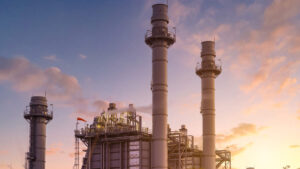Is the collapse of a US shale boom trail blazer a warning for Australian oil and gas?

No party here Pic: Getty
The COVID-19 pandemic and the demand destruction that caused oil prices to crash and slashed gas demand has now claimed another shale oil and gas scalp.
Chesapeake Energy, widely considered to be the trail blazer in the shale boom that turned the US into the world’s biggest oil producer, has filed for Chapter 11 bankruptcy protection over the weekend after chalking up debts of more than $US9bn ($13.1bn).
The company was the biggest disruptor in the US shale sector with Wood Mackenzie principal analyst Alex Beeker saying that it had showed the market how quickly production could grow, how fast projects could develop, and what the updated US model for engaging with stakeholders looked like.
The first signs of trouble came after US gas prices crashed in 2015 and the company was left scrambling to sell assets and shift towards becoming a more oil weighted company.
READ: US gas pain to last until November
Beeker says attempts to shift towards becoming a more oil weighted company came too little, too late.
However, he noted that Chesapeake’s early bet on shale technology proved to be largely correct.
Chesapeake’s bankruptcy highlights an underlying concern about US shale oil and gas companies, with a recent Deloitte study finding that about 30 per cent of these companies are technically insolvent at $US35-per-barrel oil prices.
A lesson for the Aussies?
The failure of Chesapeake is a shot across the bow for Australian companies involved in the coal seam gas (CSG) sector.
Both shale and CSG share the need for long lateral (horizontal) wells and fracture stimulation of the lateral section in order to maximise the amount of reservoir accessed by each well.
This represents an added cost over the drilling of “conventional” wells, which tap into regular oil and gas reservoirs without the need for fraccing – though laterals might still be used on occasion.
Opponents of the controversial Narrabri gas field in New South Wales have quoted an older Australian Energy Market Operator (AEMO) estimate that producing gas from the CSG field would cost $7.25 per gigajoule
Santos (ASX:STO) has disputed this figure, saying that gas from the project would cost less than coal seam gas produced in Queensland.
However, the AEMO’s latest Gas Statement of Opportunities has forecast that the forward cost of producing developed coal seam gas, or gas to be recovered from existing wells, at between $1.80 per gigajoule (GJ) and $3.37/GJ.
The figures get worse with the forward cost of undeveloped reserves of between $4.27/GJ to $7.16/GJ is used.
This compares with gas prices in the eastern states ranging from $4.04/GJ to $5.10/GJ, according to the latest EnergyQuest monthly report.
Even Shell has questioned the prospect of cheap gas on Australia’s east coast, with the major’s Australian chairman Tony Nunan telling The Australian that touting prices lower than the cost of getting it out of the ground was not based in reality.
“The $4 target, which comes up from time to time, is a price point that is lower than the lifecycle cost of being able to get that gas out of the ground,” he added.
The energy giant has already flagged its move towards lower carbon emissions and is increasing its spending on renewable energy.
That is not to say that gas developments won’t go ahead, demand will drive supply, which could in turn drive gas prices up to the level required for development of new supply to occur.
Australia’s eastern states are no strangers to paying gas prices of between $9/GJ and $12/GJ and it could well return to those levels, which would bode well for Australia’s emerging gas producers.
The ASX small cap gas hopefuls
Senex Energy (ASX:SXY) has recently completed its $400m Surat Basin natural gas development in Queensland that is expected to deliver more than 20 petajoules (PJ) of gas per annum.
The company forecasts that it will be able to do so at an all-inclusive price of less than $3/GJ by the 2022 financial year.
Its Surat Basin acreage has more than 600PJ in proved and probable (2P) reserves, giving it the potential to deliver gas into the east coast market for decades.
3D Oil (ASX:TDO) recently welcomed supermajor ConocoPhillips as a partner in its offshore gas exploration acreage in the Otway Basin, Tasmania.
While this is still at the early exploration stage, the project has estimated prospective resources of about 10 trillion cubic feet of gas and can be quickly developed in the event of a discovery thanks to its proximity to existing gas infrastructure.
Meanwhile, Armour Energy (ASX:AJQ) has raised more than $8m to progress well intervention and work programs at its Kincora oil and gas project.
Earlier this month, the company increased 2P reserves at the project by 22 per cent to 150.3PJ.
Comet Ridge (ASX:COI) has secured Queensland government environmental approval for its Mahalo gas project, the second of two environmental steps required for the project to proceed to production.
The company is now waiting on the issue of petroleum leases to complete all regulatory clearances to move ahead.
Mahalo has current 2P reserves of 172PJ.
READ: Oil’s rally may be overblown but gas still offers some interesting plays
Related Topics

UNLOCK INSIGHTS
Discover the untold stories of emerging ASX stocks.
Daily news and expert analysis, it's free to subscribe.
By proceeding, you confirm you understand that we handle personal information in accordance with our Privacy Policy.








